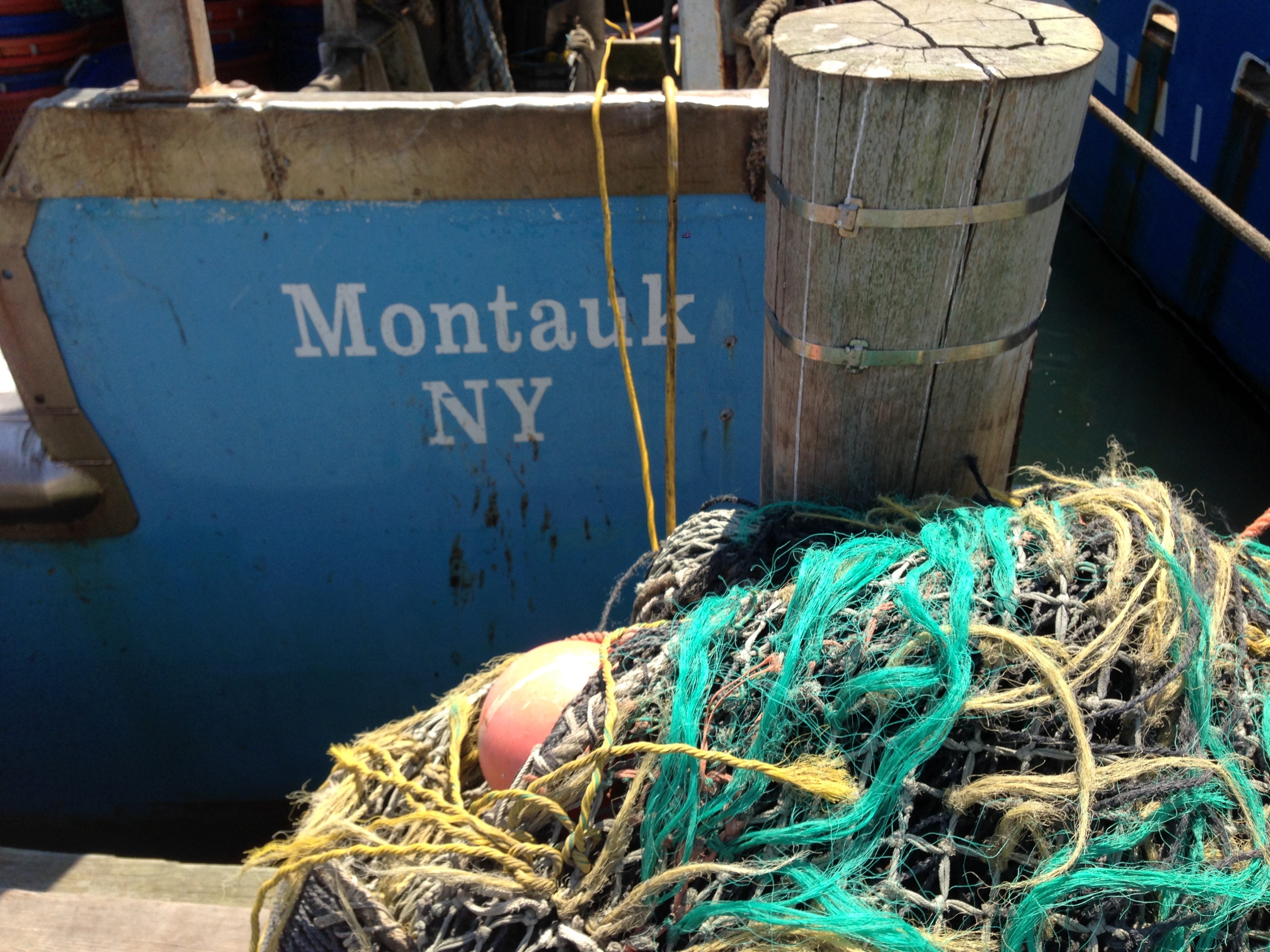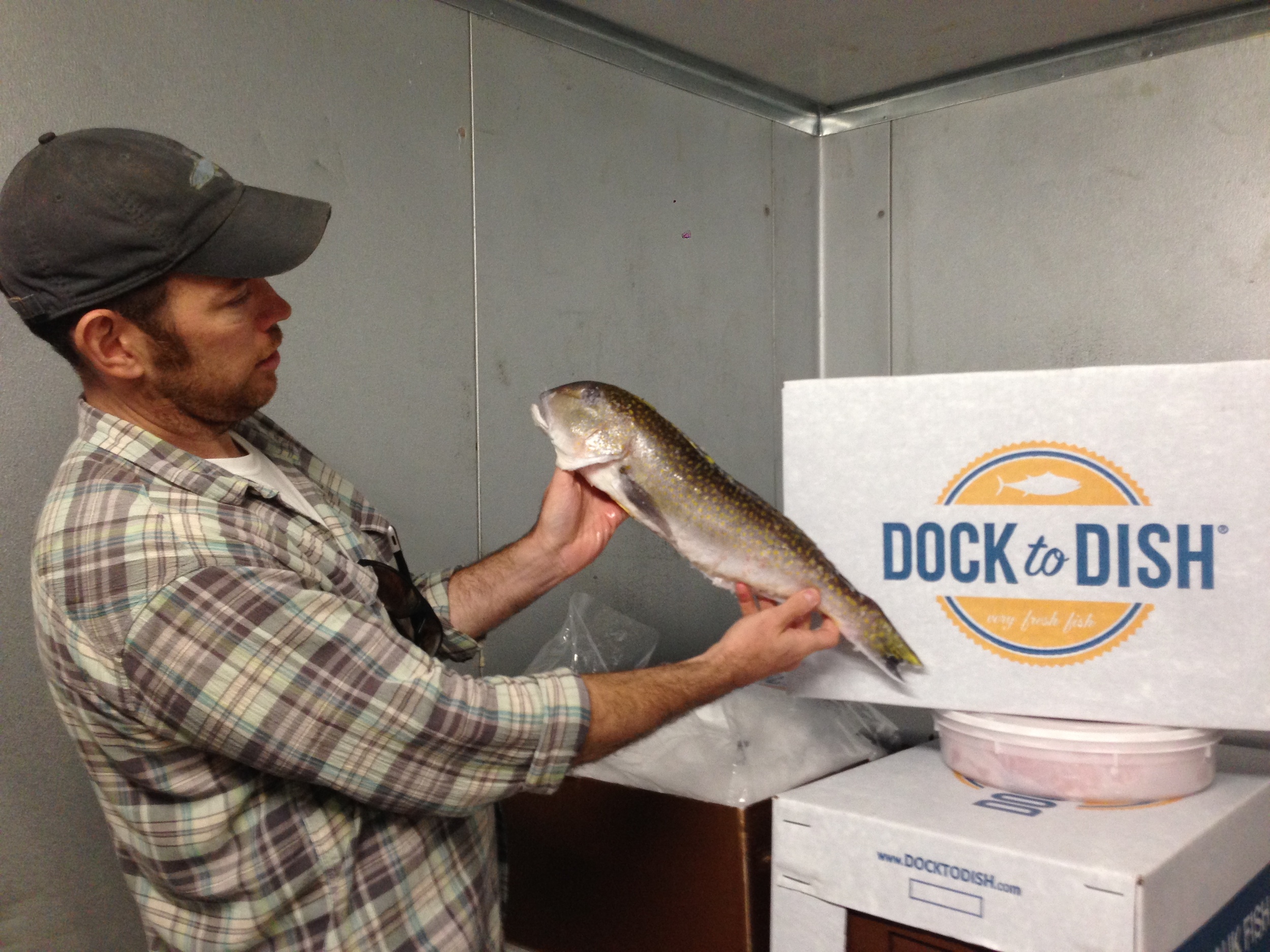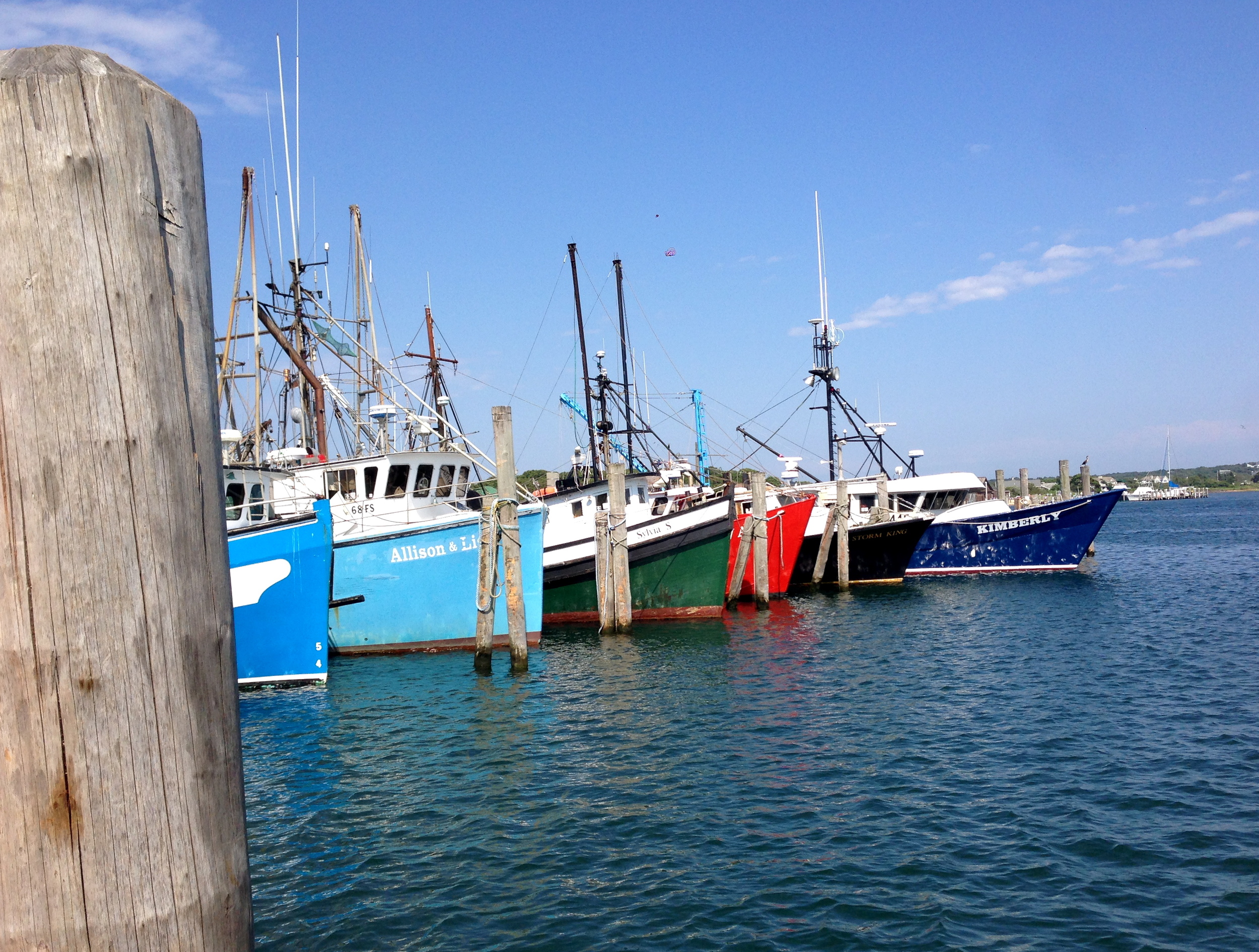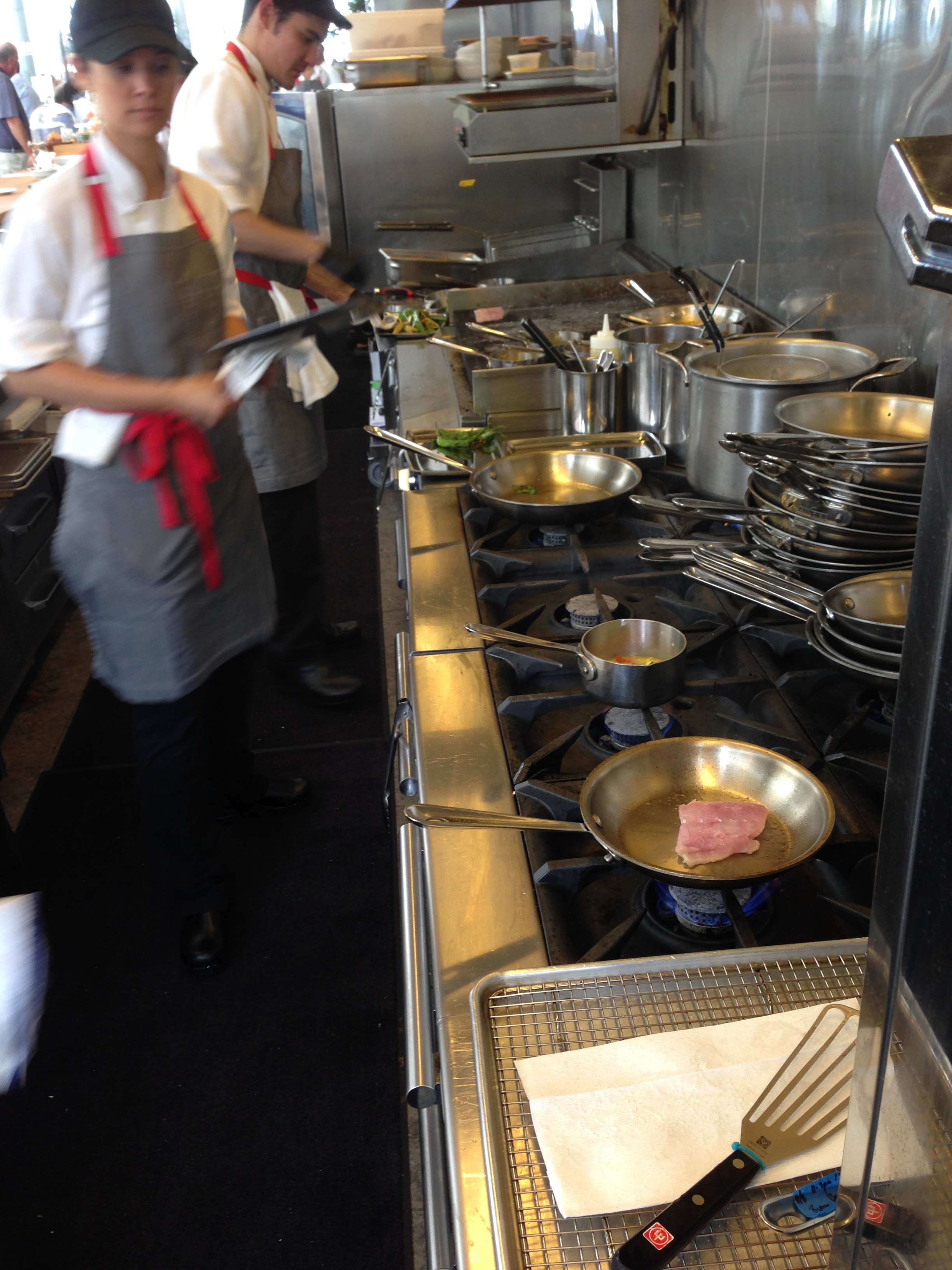
BLOG
Freezing your fish
I get asked a lot about freezing fish. What freezes well, how long things last, will it ruin the fish..?
I found some cuttlefish in the back of my freezer drawer this summer. It was probably from last spring, but could have been from 2014! Either way, I defrosted it, barbecued it and it tasted great. I mean, you really couldn’t notice it had been frozen great.
Cephalopods, like squid and cuttlefish are particularly adept to freezing. Something about the dense, uniformity of their flesh means the ice crystals don’t affect the texture too much.
While fish don't freeze quite as well as squid, there's still no need to fear your freezer. All sashimi grade fish in Japan is frozen before it's sold. And bluefin tuna (the most expensive fish in the world) is frozen on the fishing boat.
The best way to freeze fish is to dip them in water and freeze them, then dip and freeze, dip and freeze... until there's a protective coat of ice around them. Fine if you're freezing a prize fish for auction, but if you've got that much time to spare, you might as well cook it.
bluefin tuna
If you get home with some leftover fish that you know you won’t be able to eat in the next two days, put it straight in the freezer. If it goes in fresh, it comes out fresh. Just give it a clean (scale, gut and rinse), pop it in a ziplock bag and you're good to go. It'll be quite happy for a month (and quite edible 3 months later).
The reason why we’re so suspicious of freezers is probably our own fault. I’ll quite often find some fish that’s been sat in the fridge for 4 or 5 days and think ‘I’m not going to have time to cook that, I’ll chuck it in the freezer’. It’s no surprise that when it comes out of the freezer, it’s not at its best.
I have the same problem when I make soup that isn’t particularly tasty. ‘Oh, I’ll freeze the rest’ [cue disappointing meal 3 months later in which you slowly remember it was pretty horrible the first time round].
You can even cook frozen fish without defrosting them first. Check out our experiments here.
Freezer tips
Freeze fresh
If it goes in fresh, it comes out fresh. Make sure to scale, gut and clean your fish before freezing them.
Seal it tight
Air is your enemy. You’re best off putting it in a ziplock bag and squeezing all the air out before sealing. This also makes sure your ice cubes don’t get all fishy.
Label it
Write down what’s in the bag and the date it went in and you won’t get any nasty surprises, like that time I made a chicken casserole with fish stock.
Freeze in portions
If you’ve got a lot of fish, don’t freeze it all in the same bag. The same goes for freezing stock and stews. If you freeze them in individual portions, you don’t have to defrost the whole lot to make dinner for one.
Save space
I’ve got a tiny freezer, so often fillet and skin fish before freezing to save on space. Plus, little chunks of fish like this are really handy for fish tacos, stews or fishcakes.
Stock bag
If you fillet fish, it’s a good idea to have a ziplock bag in the freezer that you can chuck any heads, frames and trimmings into. Once you’ve built up a healthy amount, boil it up for stock.
Although never use oily fish (mackerel, herrings or sardines) for fish stock, it tastes rank.
Cooking fish from frozen
One of our members told me a few months ago that he often puts his fish straight in the freezer when he gets home and then cooks them over the week- straight out of the freezer! I'm a big fan of my freezer- so much so, I wrote a blog about it. But I've never cooked a fish that's frozen solid before.
I wanted to give it a go, so dutifully froze some leftover dabs in preparation. I forgot to scale and rinse them, which would have been a good idea. Something to keep in mind if you're planning on doing this kind of thing on the reg reg.
I had three dabs, so tried three different approaches- grilled, baked and pan-fried.
Grilled:
This is how I normally cook smallish fish. The skin crisps up nicely, so you get some nice Maillard flavours and it's the quickest way to cook a whole fish. I was slightly nervous about grilling a frozen fish though. Normally I turn the grill up to 11, but was worried I might char the skin, without the heat penetrating down to the bone. So I had the grill up to two-thirds.
It took a little longer than usual (no surprise there), but actually worked a treat. The skin blistered and had some lovely charred bubbles. If I'd scaled the fish first, I think it would have worked out much better. The flesh has a drier taste and feel, like cooking on wood or charcoal. Although there was a slight hint of burnt taste, which might have come from the charred baking parchment.
Pan fried:
I rarely pan fry fish. Mainly because I don't like washing up. Baking tray and parchment are my friends. I oiled the pan and had it over a low heat. After five minutes, there wasn't much going on. I turned the heat up a bit and put a lid on. After another 8 minutes it was good to go.
Not so firm as the grilled fish (mainly because it had steamed under the lid), but perfectly tasty.
Baked:
The third dab went into an oiled roasting dish and into the oven at 220C. It took 15 minutes to cook and had I not known it was frozen when it went in, I wouldn't have guessed it. Great flavour and texture.
Verdict
For frozen dabs, grilling wins. There is a caveat in this though. I probably shouldn't have used the smallest flat fish there is to test out cooking from frozen. I think anything plumper, like a portion-sized plaice, wouldn't have cooked in quite the same way. The skin would char and the frozen bones would keep the innermost meat from cooking. That's a guess though.
I think a hot oven (220C), would cook most flatfish under 700g, pretty nicely. Sure it'll take longer, but certainly not longer than the 24 hours in the fridge you'd normally spend defrosting it. Something to remember when you've got nothing in the fridge to eat.
National Vegetarian Week
I know a lot of people who have abandoned animal protein altogether- not because they have issues with the ethics of eating animals, but more because they worry about the sustainability of it all.
Animal agriculture is the single largest contributor to climate change- the methane they give off is 21 times more potent a greenhouse gas than carbon.
The soy needed to feed them is a cash crop in the tropics, where native habitats are clear-cut to grow it.
Large scale use of anitbiotics to prevent animals kept in hideous conditions from getting sick could have dire consequences for future (human) epidemics.
The numbers of large, predatory fish have declined globally by 90% and fish farming, still a young industry, is far from reaching standards many of us find acceptable.
Fair enough, on the whole and especially in the States, the food system has become a monstrous beast. It takes in a horrifying amount of resources and produces a terrifying amount of waste, purely to make cheap meat available to a growing class of people who eat meat three times a day. I can see where the vegetarians are coming from. But let’s think about the logic of the argument.
We have three categories of people, those who refuse to eat meat, those who will eat meat regardless and a third group who eat meat responsibly.
By responsible meat consumption, I mean people who eat animal protein a few times a week. They spend good money on good quality meat products. They’re happy to spend more as the meat is delicious, it’s had a good life and hasn’t been intensively reared and pumped full of hormones to make a quick buck.
To grow animals in this way takes time and money. The farmers that do it have the same morals as the responsible meat eaters- they don’t want us to slide into the US system of cattle lots and hog ranches.
It’s the same with fishing. You can fish responsibly in harmony with the sea and the seasons, or you can hoover up everything you find or grow fish in pens and feed them on drugs and other ground up fish.
Here’s the crux of my argument. For every person that gives up eating meat, we lose someone from the responsible meat eater group. The group that doesn’t care grows larger and the group that does care grows ever smaller.
As less people buy responsibly sourced fish and meat, the people who were providing it are unable to make a living. They chuck in their jobs, sell it to larger interests with no concept of sustainability or they’re forced to cut costs and corners to sell their products to the supermarkets.
What happens then? The unaccountable food industry tightens its grip and takes over the entire supply chain.
No more small farmers, no more small fishermen, no more local produce. Just cheap, homogenous, bland food.
‘Ah’ say the vegans, ‘but if everyone gave up animal protein then the world would live in harmony’.
We’ll never stop the world from eating meat. It’s too delicious and most people don’t give a damn. A more pragmatic approach is to eat less meat. Eat better meat and eat meat better.
If we only ate meat two or three times a week, it would have the same effect as two thirds of the world going vegetarian. But we’d still all eat meat and not bore anyone with our sanctimonious tirades.
You won’t find many fishmongers telling you this, but we need to eat less fish. We need to eat less animal protein full stop. When you buy animal protein of any kind, make sure you know where it came from, what it’s life was like and whether it’s a good idea to be eating it at all. Chances are you won’t find any of this information in the supermarket, so go and support a local independent retailer instead!
Fish tales from NYC
Last year we received a grant from the Winston Churchill Memorial Trust - an amazing organization that offers individuals an opportunity to travel abroad to learn and share with others working in their field.
In our case, we were inspired by some of the first and finest community supported fishery initiatives happening in North America. So our travels took across the pond to start a trip that would take us up the west coast of the US from Los Angeles to Vancouver, Canada.
This August we completed our trip with a final mission to the east coast to meet with New York's first community supported fishery, founded by Sean Barrett. Meet Dock to Dish.
Based at the eastern tip of Long Island in Montauk, NY, Sean’s venture started out much like SoleShare, with a box scheme approach, connecting the region's small-scale fishermen directly with their community of members across Long Island. Today, Dock to Dish has grown into something with more far reaching impacts. In addition to providing fish for the community box scheme, Dock to Dish now supplies Manhattan’s finest restaurants - from Michael Anthony's The Gramercy Tavern to Chef Dan Barber's Blue Hill NYC & Stone Barns. With the help of these forward thinking chefs and their enthusiasm to take the plunge, Dock to Dish has set up the countries first Restaurant Supported Fishery, and New Yorkers are eating it up.
I joined Sean on his weekly route from Montauk's docks to Manhattan to get an inside look at their story, from dock to dish.
We started off from Montauk at 3am with a boot full of the days catch - golden tilefish, a local fish with some serious sustainability credentials.
When it comes to sustainability, Dock to Dish mean what they say. On evaluating the "sustainability" of specific species, Sean accounts not only for the species' stock status, but also considers habitat conservation, gear types and harvest methods. With the term 'sustainable' banded around a lot in the fish world, it was refreshing to see robust checks happening to ensure their fish really is the reel deal.
After delivering the day's catch to their restaurant members across Manhattan, we landed at Untitled, recent Dock to Dish member and brand new restaurant at the Whitney Museum of American Art. With chef Michael Anthony at the helm, I had a chance to see some behind the scenes action with the golden tilefish taking centre stage.
The day's catch were carefully unpacked & masterfully prepared by the restaurants own butcher. Today's special: Golden tilefish with corn, sweet peppers & curried squash. The kitchen staff could all tell you where the tilefish came from, the name of the fisherman who caught it and when it hit the dock. And it didn't stop there. Every single front of house staff member knew the tilefish's story too. And for every customer that walked through the door hungry for a fish dish, they'd soon come to know the where, who and how their fish landed on their plate.
With every fish dish that came out of that kitchen, a story came with it too. Hearing that story weave it's way from the sea to the city was a brilliant thing and showed that Sean's tireless efforts to maintain a genuine connection between the fishermen, the fish and the plate are getting through, loud and clear.
Here's to hearing more dock to dish stories this year, here and abroad! Massive thanks to Sean Barrett, Paul Farnham, Mike Anthony, Jenny Jones, Susanna Cupps, Trevor & Danny for making it a memorable trip!
50 shades of cray
Back in the 70s, a number of crayfish farms popped up in England mainly supplying the lucrative Scandinavian market. These farms were stocked with signal crayfish, the larger and faster growing cousin of our native, white clawed crayfish. What they didn’t know at the time, is that these American crayfish carried a deadly plague, which led to a massive decline in our native crayfish population. There are a few untouched rivers in remote parts of England and Wales, but like the grey squirrel, these alien invaders are now much more common than our endemic white claw.
It’s a sad tale and one that is common across the world- from lion fish in the Caribbean to cane toads in Australia. However, there is an upside to this. We can eat signal crayfish with impunity. It’s one of the few wild animals where the more we eat, the better off the British environment is. But unlike grey squirrel, they‘re also really tasty. Much nicer than the drab, dry [Chinese] crayfish tails you get in prepacked sandwiches.
We don’t have a history of eating crayfish in the UK, mainly because our native white claws are very small. In Scandinavia they’re very popular though. In Sweden, it’s traditional to throw a crayfish party on midsummer’s day called a kräftskiva.
They’re also feted in the Deep South of US- the bayous are chock full of them and they play a large part in Cajun and Creole dishes like gumbo and Étouffée. Although they call them crawfish, craw daddies or mudbugs.
This week's crayfish have been caught in traps in rivers and ponds in Berkshire by the one & only Crayfish Bob. Bob has pioneered many large scale trapping efforts in our local waterways and has been at it for years. He's managed to remove several tonnes of the invasive critters - excellent news for aquatic ecosystems, delicious news for us!
So as you're tucking into this weeks catch, remember, you’re doing your part to halt the spread of plague and the extinction of an endemic species. Not bad eh?
Our crayfish will come pre-cooked for all our members. Your task is to get the meat out of the tail. Check out the video below to find out how.
And for a twist on a brilliant bisque recipe, Bob's top recipe pick below.
Cray-zy good!



























